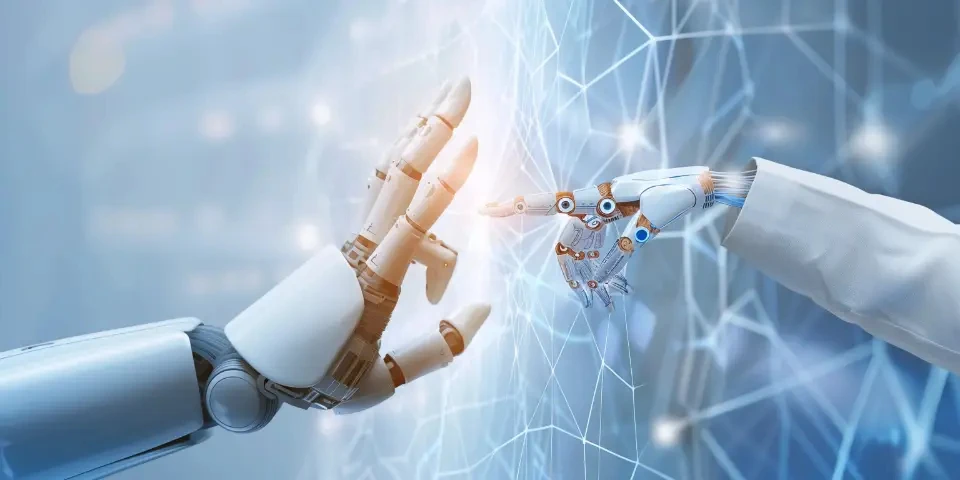Breaking the Language Barrier Connecting Cultures through AI Language Translators
Language is an integral part of human communication, allowing individuals to express their thoughts, emotions, and ideas. However, the diversity of languages spoken around the world often creates a significant barrier to effective international communication. Thankfully, advancements in artificial intelligence (AI) language translators have revolutionized the way we bridge this gap, connecting cultures and fostering mutual understanding. In this article, we will explore the various ways AI language translators are breaking down the language barrier and revolutionizing cross-cultural communication.
1. Instantaneous Translation
One of the most significant advantages of AI language translators is their ability to provide instantaneous translation. Whether it's a conversation during a business meeting, a tour guide explaining historical landmarks, or simply chatting with a friend from another country, AI translators allow for real-time translation. This feature eliminates language barriers and enables individuals to communicate freely without the need for a human translator.

There are several AI translation apps available today, such as Google Translate and Microsoft Translator. These apps use powerful AI algorithms to analyze and interpret languages, providing accurate translations in a matter of seconds. Users can simply speak or type their message, and the app will dynamically translate it into their desired language. Such apps have become indispensable tools for travelers, business professionals, and individuals seeking to connect with people from different cultures.
2. Translating Cultural Nuances
Language is not only about words but also about the cultural nuances and expressions that are embedded within it. AI language translators have made significant strides in understanding and translating these nuances, enabling more accurate and contextually appropriate translations. For instance, AI translators can now recognize sarcasm, humor, and idiomatic expressions, ensuring that the translated text retains the intended meaning and tone.
3. Enhanced Language Learning
AI language translators have also transformed the process of language learning, making it more accessible and efficient. Language learning apps, such as Duolingo and Babbel, integrate AI translation technology to provide learners with interactive lessons and real-time feedback. These apps leverage AI algorithms to analyze learners' pronunciation, grammar, and vocabulary, offering personalized recommendations for improvement. With AI language translators, language learners can practice their skills, engage in conversations, and gain confidence in their target language, all with the help of AI-powered virtual tutors.
4. Breaking Down Language-based Divide
Language barriers often lead to social and economic disparities, hindering access to information, education, and employment opportunities. AI language translators play a crucial role in breaking down these barriers, allowing individuals from different linguistic backgrounds to access essential resources. For instance, websites and online platforms that incorporate AI translation services ensure that their content is accessible to a global audience, regardless of their native language. This inclusivity fosters a more equitable and interconnected world by eliminating language-based divides.
5. Simplifying Travel Experiences
Traveling to a foreign country can be a daunting experience, especially when faced with a language barrier. AI language translators have made traveling more convenient and enjoyable by facilitating communication between travelers and locals. For instance, the app "TripLingo" provides users with essential phrases, cultural tips, and even integrates with ride-sharing services to enhance the overall travel experience. Such apps empower travelers to explore new cultures, connect with locals, and navigate unfamiliar territories with confidence.
6. Preserving Endangered Languages
AI language translators not only help connect people speaking widely spoken languages but also aid in preserving endangered languages. Many languages, spoken by a handful of people, are at risk of extinction due to globalization and the dominance of more widely spoken languages. AI translators give voice to these endangered languages by expanding their reach and enabling translation capabilities. This breakthrough allows for the documentation and preservation of linguistic diversity, culture, and heritage.
7. Overcoming Communication Challenges in Healthcare
In healthcare settings, effective communication between medical professionals and patients is of utmost importance. Language barriers can lead to misunderstanding, misdiagnosis, and inadequate treatment. AI language translators are increasingly being utilized in healthcare facilities to bridge the communication gap. These tools provide real-time translation services, ensuring that patients can effectively communicate their symptoms, concerns, and medical histories to healthcare providers. This enhancement in communication leads to better patient outcomes and an improved quality of care.
Common FAQs
1. How accurate are AI language translators? AI language translators have significantly improved their accuracy over the years. While they can provide basic translations with high precision, complex linguistic nuances and cultural contexts may still pose challenges.
2. Are AI translation apps better than human translators? While AI translation apps offer convenience and speed, human translators are often more adept at handling complex translations that require deep cultural and contextual understanding. AI translators are still developing and should be seen as valuable tools instead of replacements for human translators.
3. Do AI language translators work offline? Some AI language translators require an internet connection to function, while others offer offline capabilities. It is essential to check the specifications of the specific translator app or device you are using.
Explore your companion in WeMate